Ida and I chose the Vega archipelago for our final stop on our summer Helgeland road trip. I had only visited Vega in the winter, so I was excited to see the island in its summer glory! You can read my full guide to Helgeland here.
Vega is one of Helgeland’s most popular islands, largely due to its UNESCO World Heritage Site status. And I’ll be honest, Vega’s fancy title was initially a bit of a turnoff for me. What I love most about Helgeland is how undiscovered the islands here feel, at least compared to more popular destinations in Norway like Lofoten and the Western fjords.
But I was wrong about Vega. Vega is beautiful, and peaceful, and quirky, and not a bit pretentious. Plus it offers the perfect mixture of quiet escape, mountain hiking, and culture.
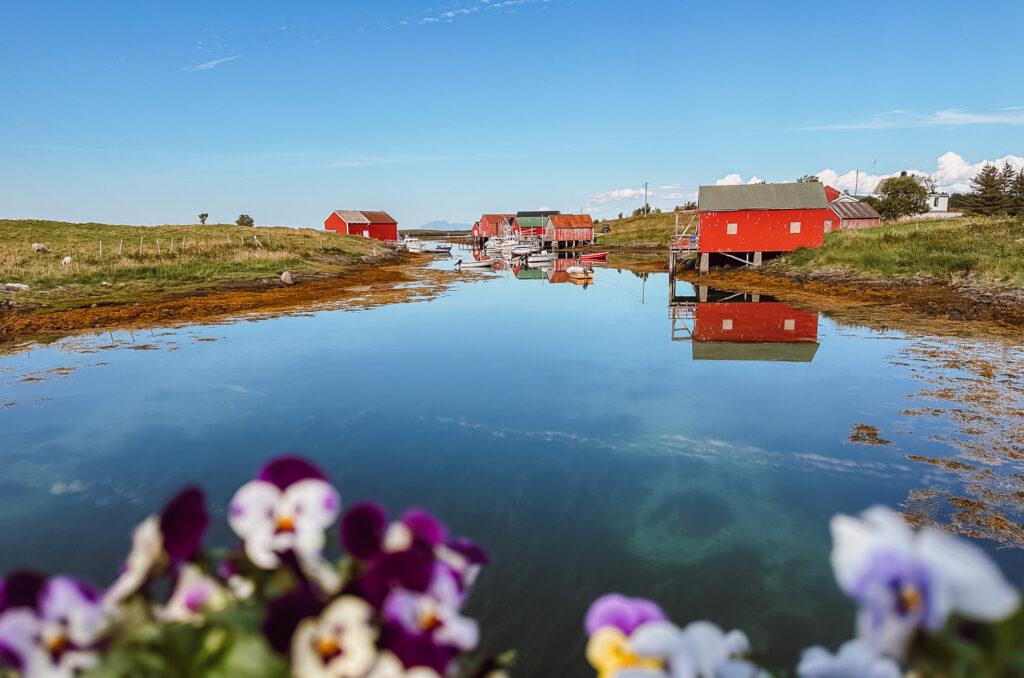
Getting to Vega
After visiting Myken and Træna, Ida and I reunited with my car in Sandnessjøen. From there we got the car ferry from Tjøtta to Igerøya on Vega. You can check the Vega ferry schedule here. And no, you don’t have to book the ferry in advance. If you’re driving a Norwegian car you (or your car rental company) will be billed later, and if you’re driving a foreign vehicle you can pay by credit card when driving on board.
In Norway I recommend comparing car rental prices and booking through AutoEurope. You can read my guide to driving in Norway here.
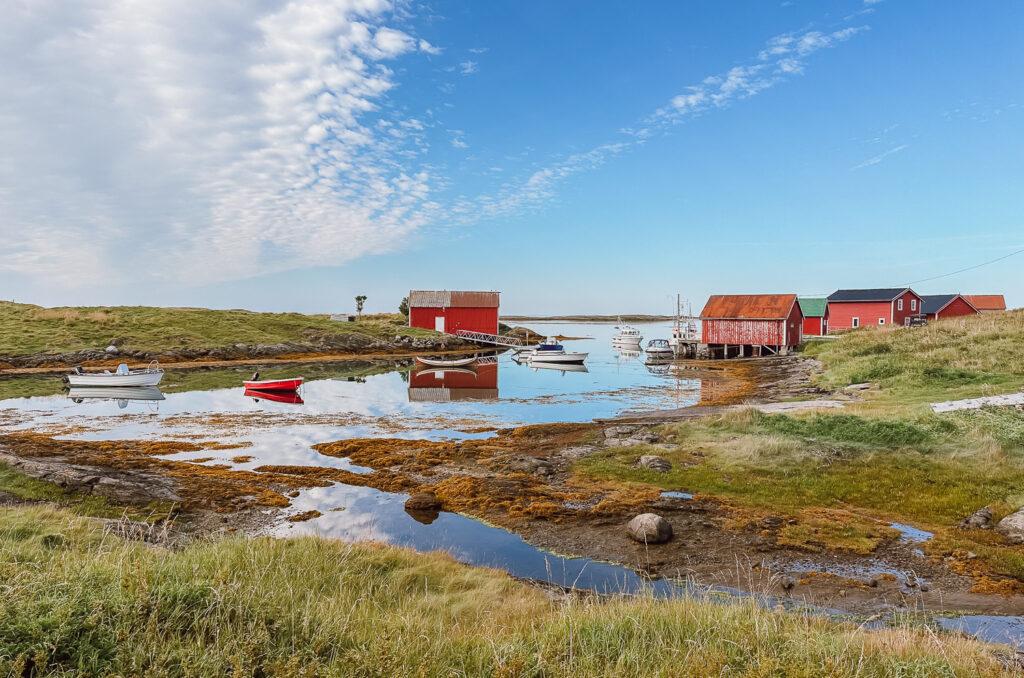
The Vega Stairs
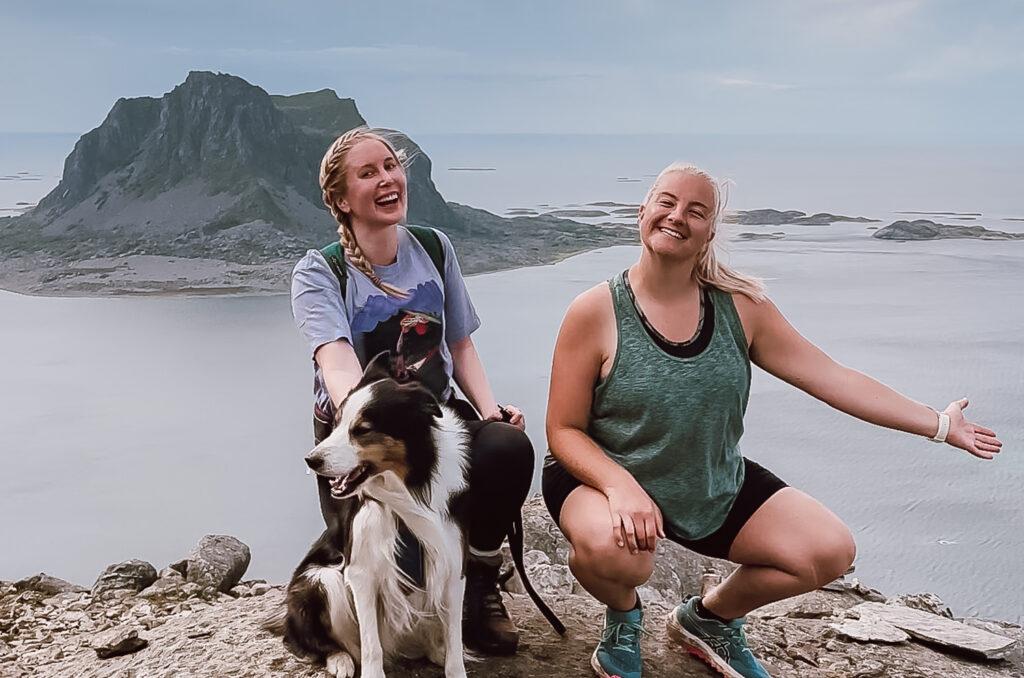
Probably the most popular hike on Vega is the Vegatrappa, or Vega Stairs. Here nearly 2,000 steps take you to the top of Ravnfloget, with beautiful views across to Søla and other smaller Vega islands. The hike up takes about 30 – 60 minutes, depending on how fast you go.
The climb is steep, starting at sea level and ascending 310 meters. But the views are incredible the entire way up, so you could always do part of the hike if you don’t want to climb all 2,000 steps. When I visited in the winter my friends and I only climbed part of the way up so that we could get some of the beautiful views.
Each step has been sponsored by local businesses and families, and you can see their names engraved on the steps as you walk up, which I thought was a really sweet touch.
I was a bit unsure if I should take Alfie on this hike as it’s so many steps, but he climbed them like the champion he is.
And if you really want to get your adrenaline pumping, there’s also a via ferrata here that looks absolutely terrifying (or fun, depending on your relationship with heights). You can book the via ferrata here.
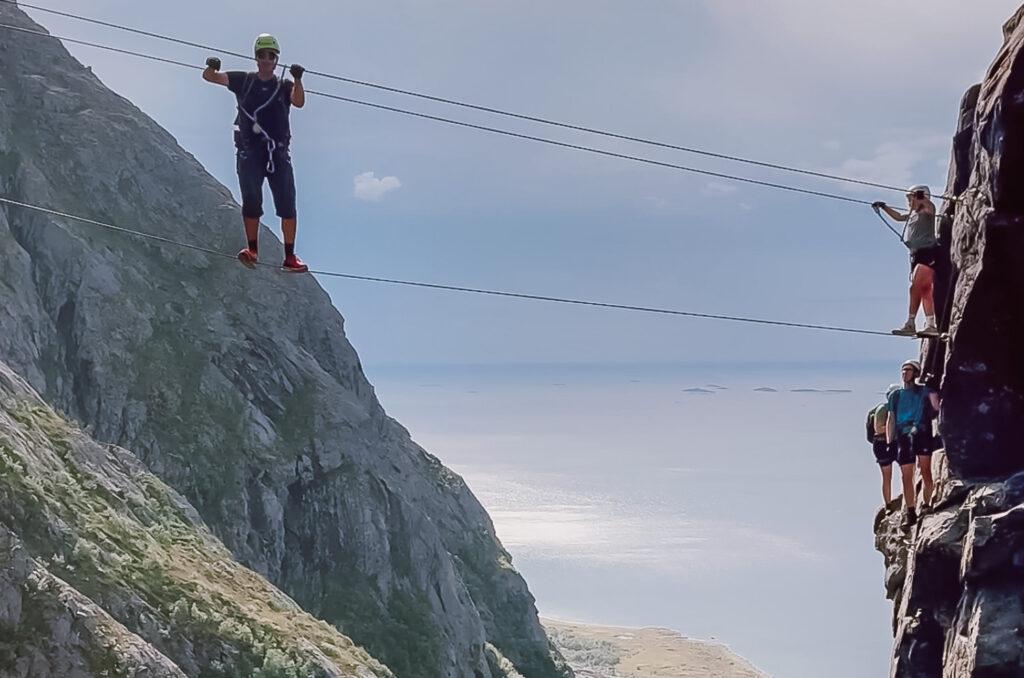
Ida and I did not opt for the via ferrata. But we were still rewarded with incredible views when we got to the top of Ravnfloget.
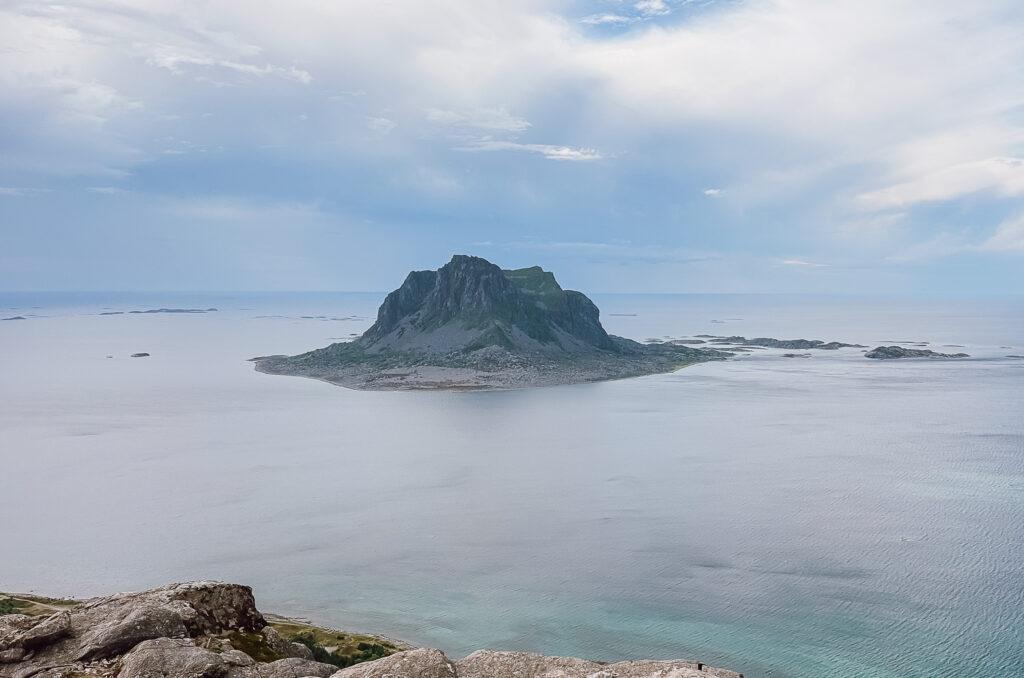
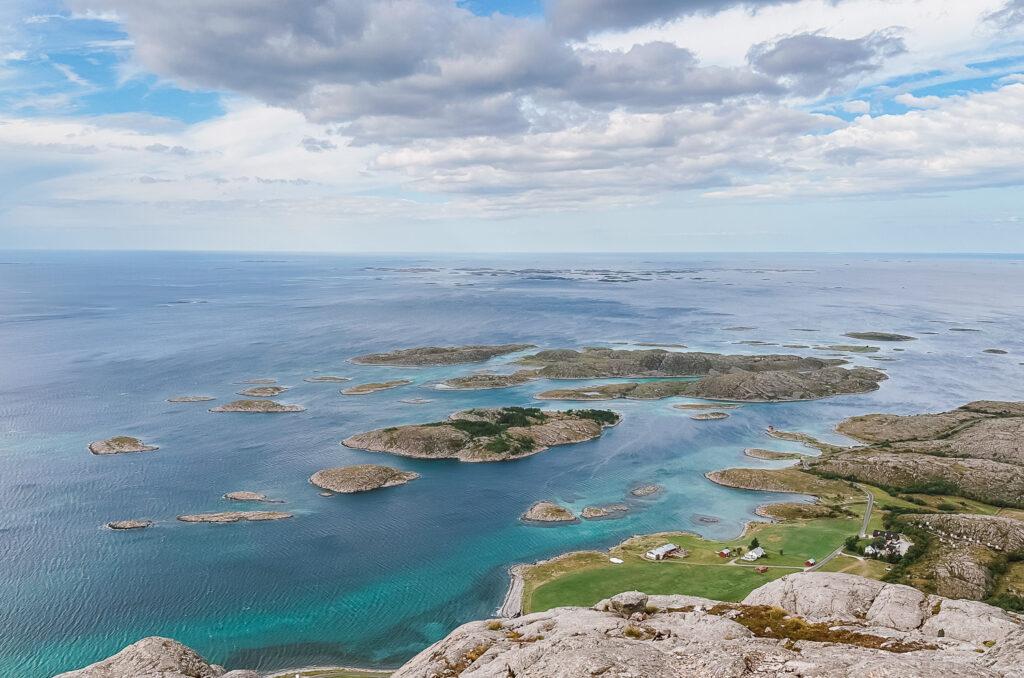
Vega World Heritage Center
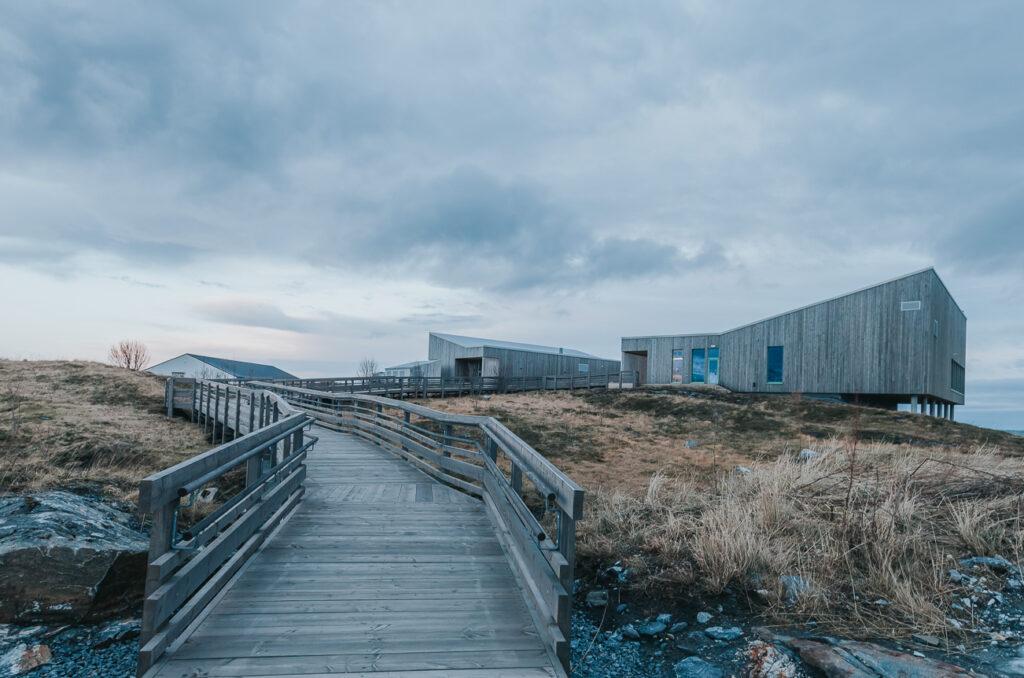
The Vega islands were were awarded UNESCO World Heritage status in 2004 for the unique way the local fisherman-farmers protect the eider duck population that make their nests on Vega each spring.
Local women have built small wooden houses to offer shelter to the ducks, and they even patrol the area to chase away predators. Then when the ducks leave in the summer they collect the down feathers the ducks have left behind, which they then turn into exclusive down comforters and pillows.
And I do mean exclusive – a down comforter from here will run you around $6,000. But hearing about the beautiful symbiotic relationship between the ducks and Vega locals, as well as how these down products can be passed down through generations, I could definitely understand the appeal.
Vega’s World Heritage Center has a museum where you can learn more about the islands and eider duck population. I went to the museum on a previous visit to Vega, so Ida and I skipped it this time. But I definitely recommend it if you want to learn more about Vega!
Otherwise my favorite part about visiting Vega is simply enjoying the quiet and beautiful views, which Vega has an abundance of.
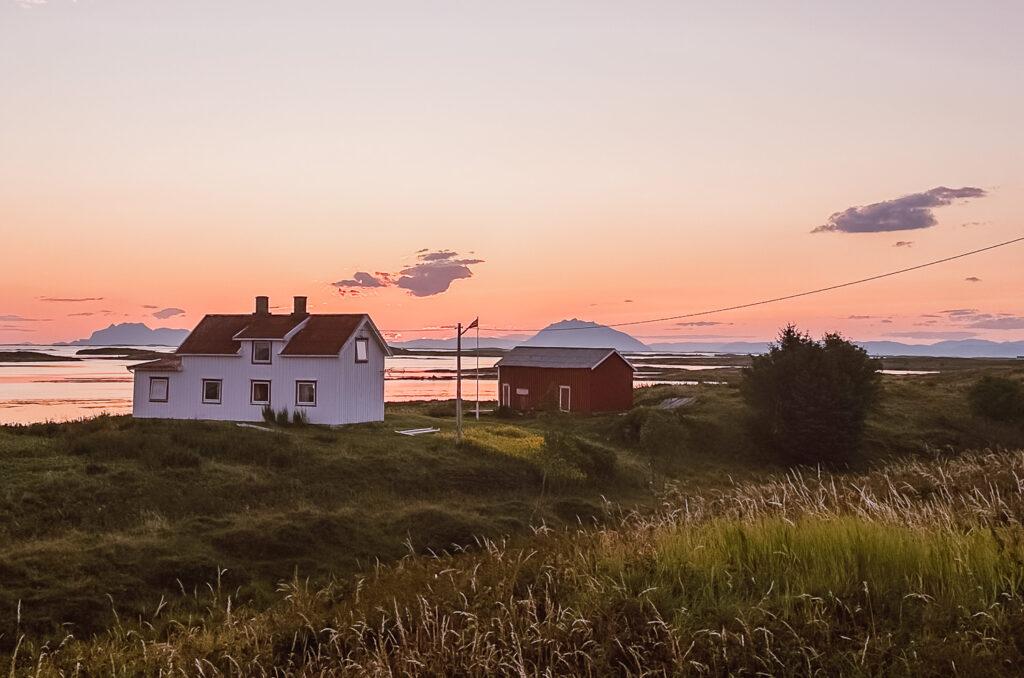
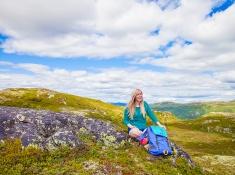


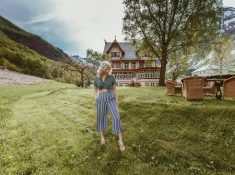
Leave a Reply